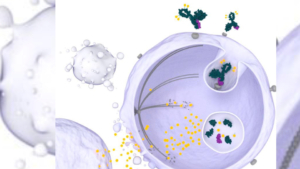
Where has the conviction gone?
2023 was another particularly tumultuous year for life sciences and, although the lingering effects of the last year are unlikely to change dramatically, the stabilisation of interest rates (off 16-year highs) and emerging direction of travel (market data points) tilt our bias to positive for the new year.
Out with the old… As the smallest life science companies often champion innovation, they have the heaviest burden of proving safety and efficacy before commercialisation. The required lengthy development horizon is particularly challenging in times of elevated interest rates as clinical activities are capital intensive. Although this was not a concern before 2021, elevated interest rates have adversely tainted investor sentiment, especially in 2023, reflected in the 80% decline of microcap stocks included in the SPDR S&P Biotech ETF, XBI (since the peak on 8 February 2021 versus the 25% overall ETF performance decline and a slight increase for large caps within the ETF), which has resulted in most of the smaller companies trading below cash.
Positive bias towards the new: Robust science will prevail (as in previous cycles). An improving macro environment is expected to rally investor sentiment. With the stabilisation in rates, we have seen more market activity, including the announcement of large acquisitions to enter or expand into specialised areas, including AbbVie’s foray into CNS (Cerevel for US$8.7bn) and entry into immunotherapy (ImmunoGen for US$10.1bn); Eli Lilly, Novo Nordisk, Bristol Myers Squibb with billions in other acquisitions. Prior to these, we had observed tepid risk tolerance despite the approaching patent expirations for big pharma. Big pharma companies cannot rely on their current portfolios, resonating with Pfizer’s announced plans to eliminate US$3.5bn in overhead with the displacement of COVID revenues. Increased activity from alternative investors (with longer investment horizons) as they take advantage of the unique arbitrage opportunity (higher biotech cash levels versus market caps). Innovative therapies and devices are expected to stem from smaller, more agile/entrepreneurial biotechs as development requires specialised resources. Although disease-altering or new mechanisms of action remain the holy grail, generalist and more conservative investors have buoyed solutions with niche expertise and/or shorter development horizons.
This article was originally published in European Biotechnology Magazine Summer 2024.




